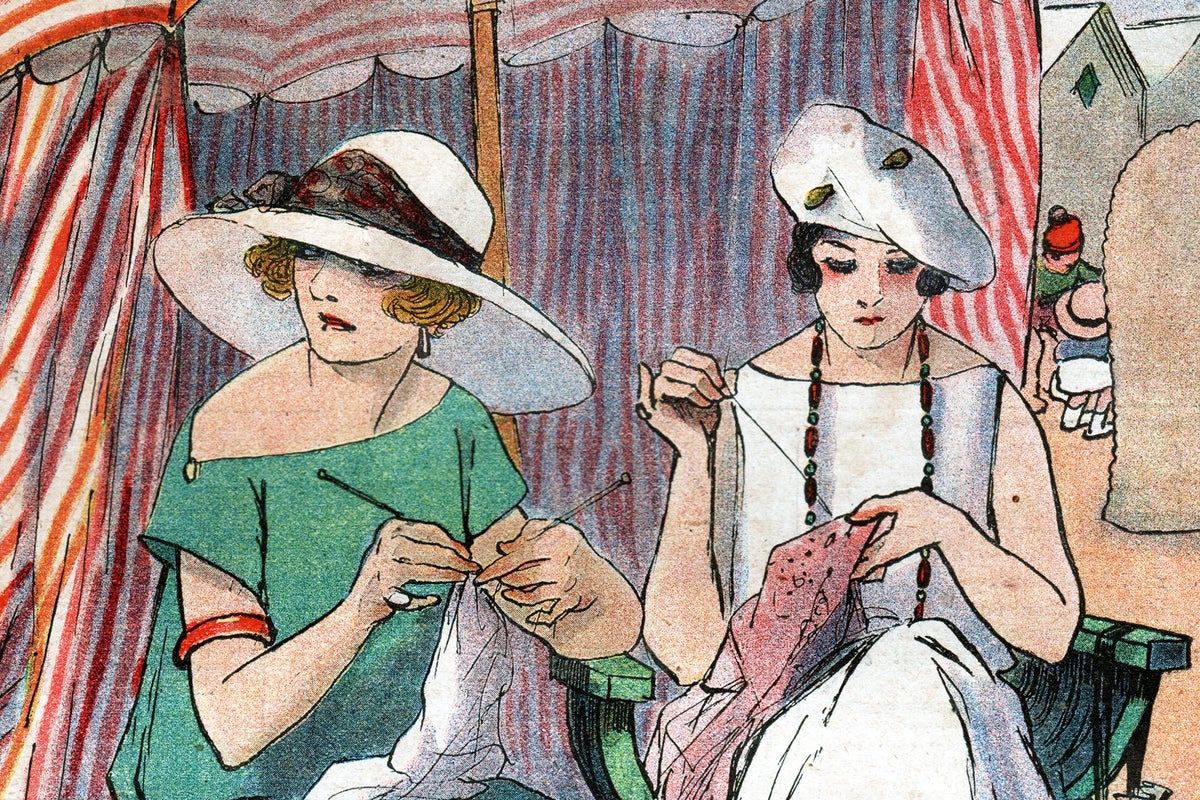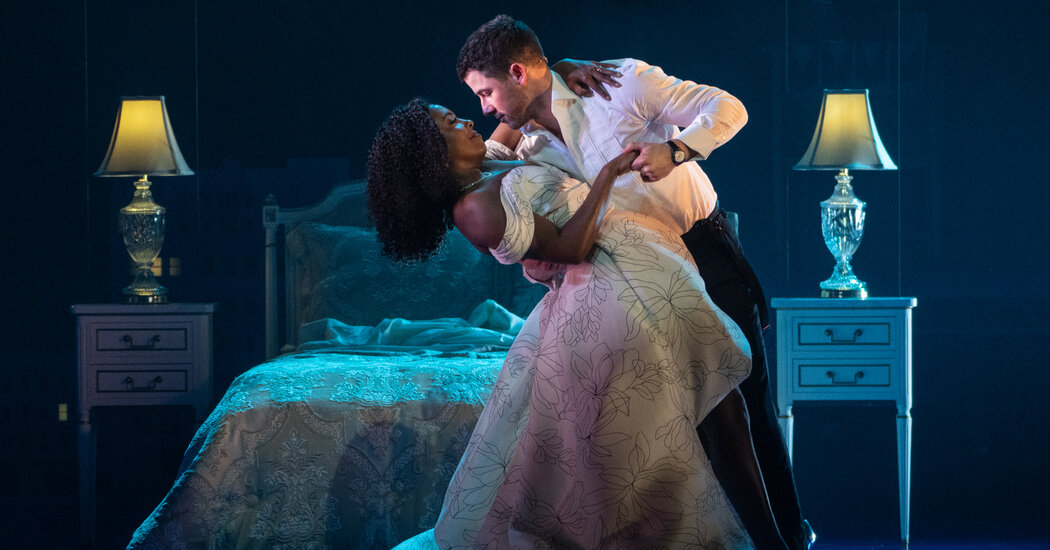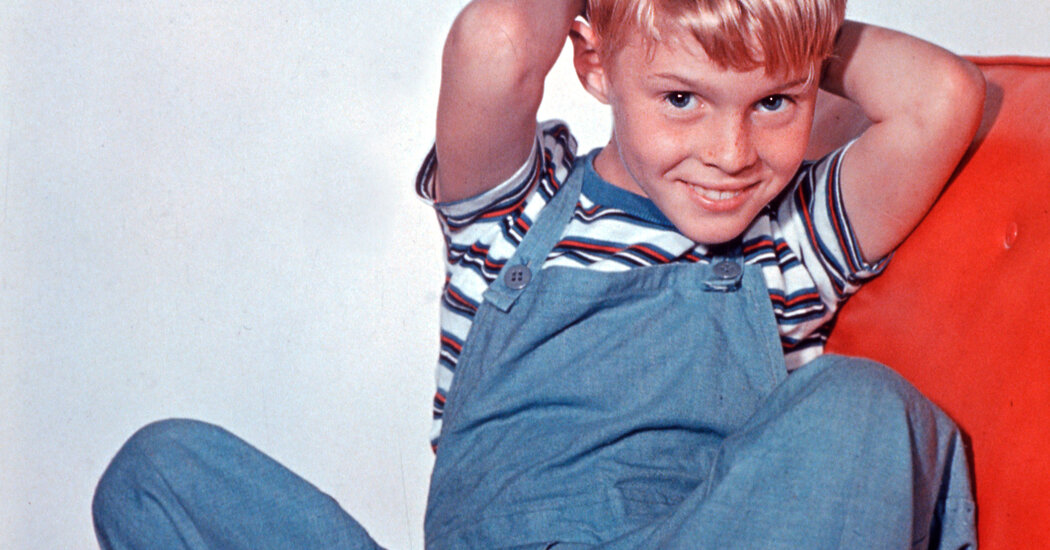
How scandal rocked the internet’s knitters: ‘Not a week goes by without drama’
Have you heard the one about the yarn dye entrepreneur who allegedly faked her own death to avoid completing orders? I first heard it last year, shortly after taking up knitting. The story, which seems to be gleefully embroidered with every subsequent telling, goes a little like this: a woman in the US, who’d become a superstar on a popular knitting site, was overwhelmed with orders for her products, so – via updates provided by her “sister” – pretended to be hospitalised, then pretended to have died. Orders went unfulfilled. Someone claimed to have spotted the woman “post-death” in a branch of Walmart. The phrase “Zombie yarn dyers” has since become an inside joke among the knitting community.
Scandals like these weren’t initially the reason I was drawn to knitting last year. I instead wanted a new form of distraction. TikTok had become a big part of my life, and I found myself mindlessly flicking through clip after clip any time I had a second to spare. I needed to break the cycle, and knitting was a good way to keep my hands busy and my eyes off screens. But nothing could have prepared me for how much drama underpins what many assume is a wholesome activity.
It seems inconceivable that knitting should be anything other than an innocent pastime. But not so! Just five months into my knitting journey, I had discovered a different side to the hobby. The algorithms of TikTok and Instagram quickly cottoned on to my newfound interest, so my social media feeds are now full of wonderful woolly creations – but also the never-ending conflict that seems to go on in the world of fibre arts.
In January, I was gripped as arguments erupted over the sharing of pirated knitting patterns through a Discord server. The revelation, uncovered by several knitting designers, caused a huge debate on social media. Designers were understandably angry that patterns they would normally have been paid for were being distributed for free, while knitters argued over whether patterns should always cost money or if more well-known designers could afford to take the hit.
Then, talk of size inclusivity – or the lack thereof – began to circulate, as knitters on TikTok complained about some designers not including plus size modifications in their patterns. Nordic designer Mette Wendelboe Okkels, who goes by her brand Petite Knit, unexpectedly found herself at the centre of this particular storm. Some TikTokkers were upset that the majority of Okkels’ patterns, which are popular on social media, don’t extend beyond 5XL.
Complainants argued that Okkels should include more sizes – despite her largest sizes accommodating a maximum bust circumference of 56 inches, equivalent to about a US size 26 (UK size 30). Some knitters came to her defence, arguing that Okkels’ Nordic background may have influenced the number of sizes she could adjust her patterns for. Others – rather nonsensically – pointed out that her moniker is Petite Knit, and therefore larger women shouldn’t expect her to provide sizes for them.
Knitters are quite analytical by nature, so if they spend all this time thinking about stuff in general, it’s no surprise that so many of these opinions are formed
Emma Zimmerman, knitter
Each week there seems to be something new for the online knitting community to debate. And each week I am surprised by my own response – who knew I had so many opinions about knitting? And that they’d prove to be so controversial? In discussions about whether to use acrylic yarn or natural fibres, I am firmly in the latter camp, my heightened awareness of microplastics being the deciding factor for me. But I’ve since learnt that this has been branded “yarn elitism” because of how much more expensive materials become. See what I mean?
Accusations of pattern copying or using AI to generate them are also a hot topic of debate. Over Christmas, two crocheters got into digital fisticuffs over ownership of a blanket pattern, despite the original pattern having been modified and used hundreds of times over many years. More recently, a designer was accused of using AI to copy another designer’s goose-inspired pattern, but testers said this resulted in near-unreadable instructions riddled with mistakes.
Every time a new drama begins to unfold, I watch each video recap eagerly. I lap up all the resulting hot takes, the deep dives, the explanations or lack thereof. I secretly cast my own judgements on the knitters I disagree with or “like” the comments made by the knitters who share my thoughts. But I’ve never posted anything myself, partly because I don’t think anyone wants to hear my opinion, but also because I enjoy being a passive consumer of gossip.
The idea that knitting is a pure, wholesome hobby that engineers meditative calm is idyllic but entirely false. Historically, knitting circles were spaces for women to practice the craft together and simultaneously exchange information about anything and everything. To gossip, in other words. “Stitch ’n bitch” is a common phrase among modern knitting communities, and despite the negative connotation, gossip is a hugely important form of communication, particularly among women. While the knitting guilds of the 14th and 15th centuries were reserved exclusively for male knitters, who regarded themselves as master craftsmen, women had their own unofficial spaces to practice their skills and speak freely about what mattered to them.
But the face of gossip has changed along with the advent of social media, and not necessarily for the better. Aleksandra Sołowianiuk, a Nottingham-based knitwear designer, says that while she isn’t surprised by the strong opinions shared by other knitters online, she finds there is a greater sense of entitlement now that fuels some of the drama. Sołowianiuk was one of the many designers who found her patterns pirated on the aforementioned Discord server.
“There are so many people online who want what they want now, they want it for free, and they’re not happy with the idea that some things should be paid for,” she says. A recent TikTok trend that saw users posting videos of their “knitting hot takes” often included a gripe about having to pay for patterns. Some have even suggested that AI could design knitting patterns for free. “By all means, go and get your AI knitting patterns,” Sołowianiuk says. “But it really devalues the work and passion knitwear designers pour into the patterns they release.” Sołowianiuk says she spends anywhere between six to eight months designing, testing and releasing patterns, at a cost of potentially hundreds of pounds of yarn. “For people to then just share it online really devalues the work knitting designers have put into creating it.”
Whereas knitting circles used to provide space for intimate back-and-forth discussions, social media allows people to post their opinions and hot takes without really having to engage with others who might disagree with them. Anyone can film their opinion, upload it, and either ignore the comments or turn them off completely. Emma Zimmerman, a long-time knitter based in Atlanta, Georgia, says this one-way-street feature of social media makes it easy for drama to spread without anyone ever taking accountability.
“There’s barely a week that goes by without the fibre arts community seeing some sort of drama play out,” she says. “But a lot of these issues tend to be flashes in the pan. This week, they’re talking about AI patterns, next week there’ll be something else. And nothing ever really gets done. It’s important to have some of these conversations, especially around inclusivity and ownership, but I think we move on so quickly because that’s how social media works.”

Perhaps a reason for knitters’ propensity to discuss and debate even the smallest things is to do with the fact that “when you’re knitting, you literally can’t do anything other than think,” Zimmerman says. I’ve found this to be a plausible theory, as no other hobby has forced me to be as alone with my thoughts as knitting has. Even when I’m listening to a podcast or audiobook, I find myself turning over my thoughts and ideas while I make loop after loop after loop. It has forced me to confront whatever challenge is ahead of me and to really think about what I want to do, rather than reacting impulsively, which can only be a good thing.
“Knitters are quite analytical by nature, which is why the craft might appeal to them,” Zimmerman proposes. “So if they spend all this time thinking about stuff in general, it’s no surprise that so many of these opinions are formed. And, like almost anyone online, they share their hot takes and thoughts into the ether, but are maybe not necessarily willing to hear what someone else might think.”
The irony hasn’t escaped me that I began knitting to stop looking at my screen so much, yet I’ve been drawn into the endless soap opera that is “KnitTok”. And it’s hard for me not to get sucked in, particularly as someone who loves gossip. But it’s also been sobering to come to terms with the fact that not even the craft’s wholesome reputation can protect it from the claws of social media, where comparisons, accusations and unsolicited opinions are rife. This digital knitting circle can be petty and mean, but I’ve grown so much as a knitter from the side of KnitTok that is kind and generous. It’s also the side I’ll continue to engage with moving forward. After all, that’s what knitting circles ought to be about.










